Abstract
The inhibition by bacitracin of the enzymatic dephosphorylation of C55-isoprenyl pyrophosphate is abolished by the addition of chelating agents. If, however, the chelating agent is added after a preincubation of bacitracin with a divalent cation and the lipid substrate, then its addition has little effect, indicating that bacitracin, metal ion, and C55-isoprenyl pyrophosphate form a complex. Various divalent cations can participate in complex formation, but monovalent cations are ineffective. A direct demonstration of the formation of a complex between the C55-isoprenyl pyrophosphate and bacitracin in the presence of metal ions was obtained. Molecular models that show one possible conformation for a complex between bacitracin and the C55-isoprenyl pyrophosphate, in which the metal ion acts as a bridge between the two compounds, are presented.
Keywords: molecular model, chelating agents, ternary complex, cell wall synthesis, peptidoglycan
Full text
PDF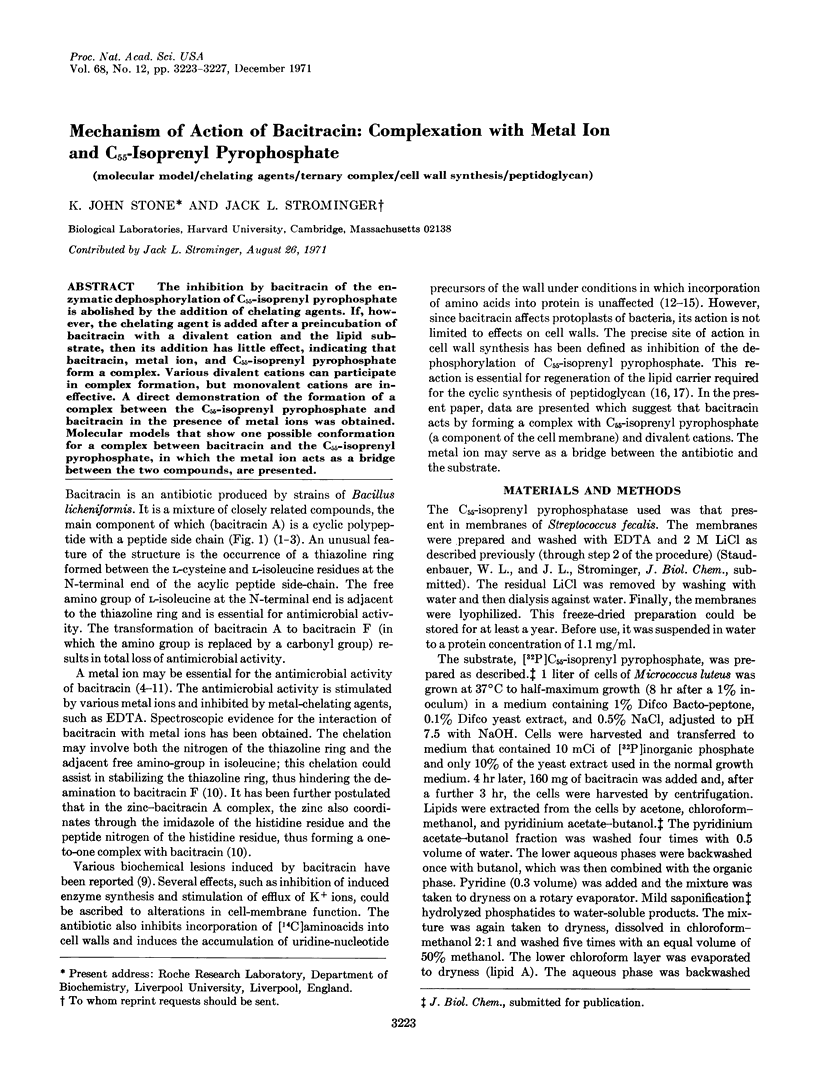
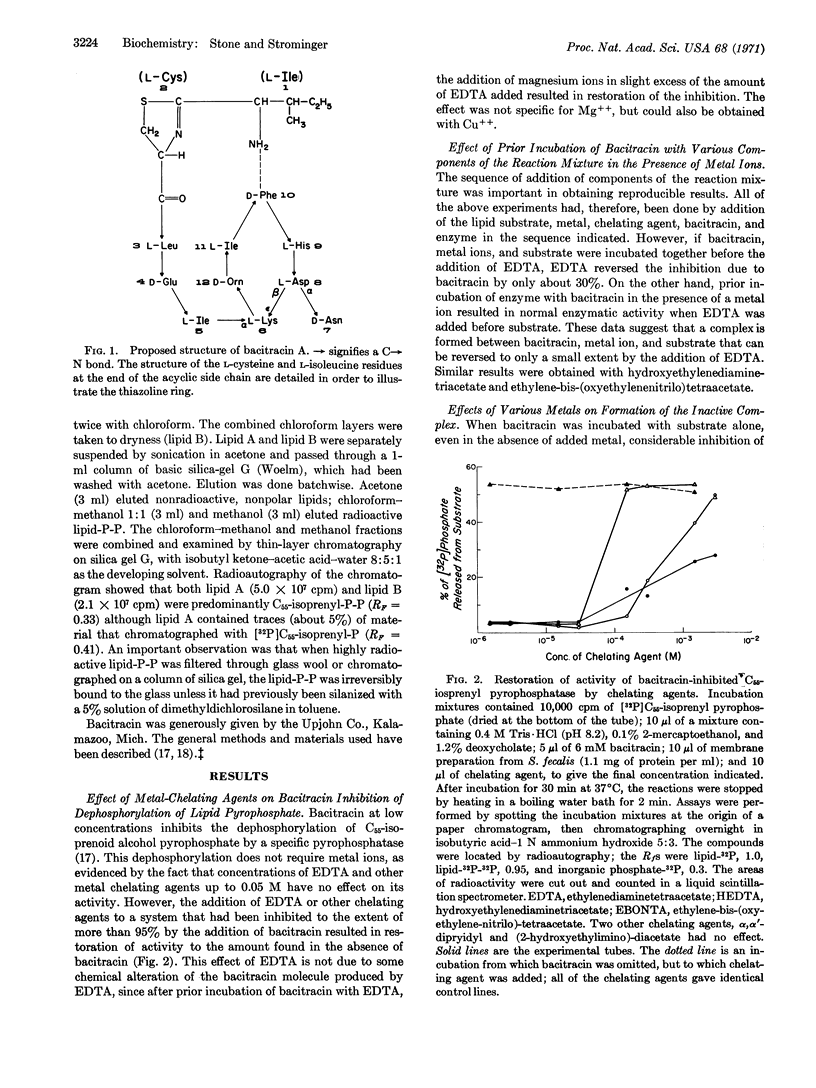
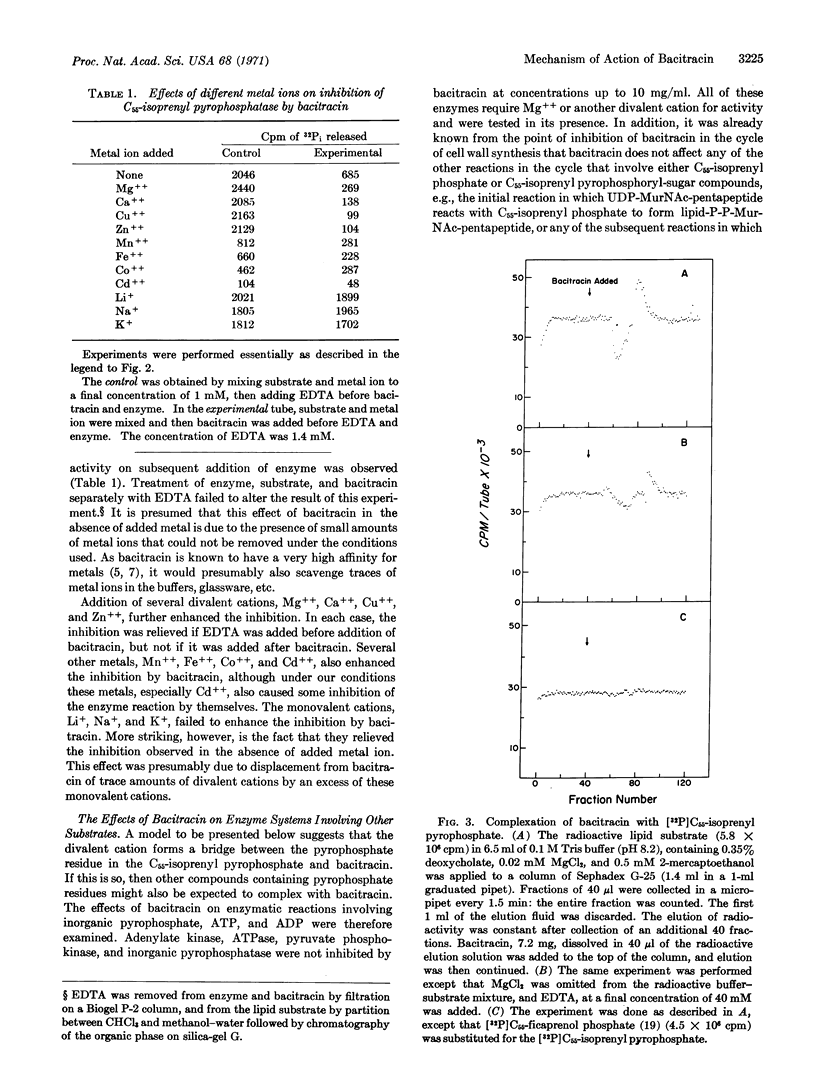
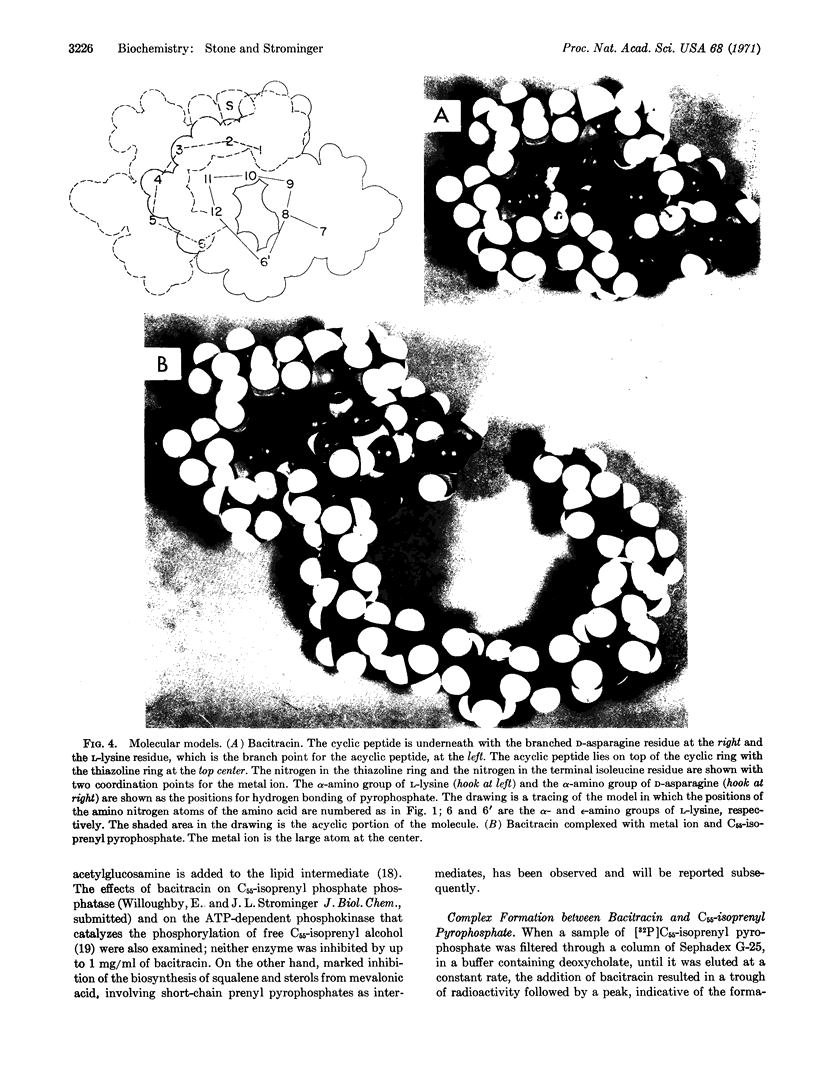
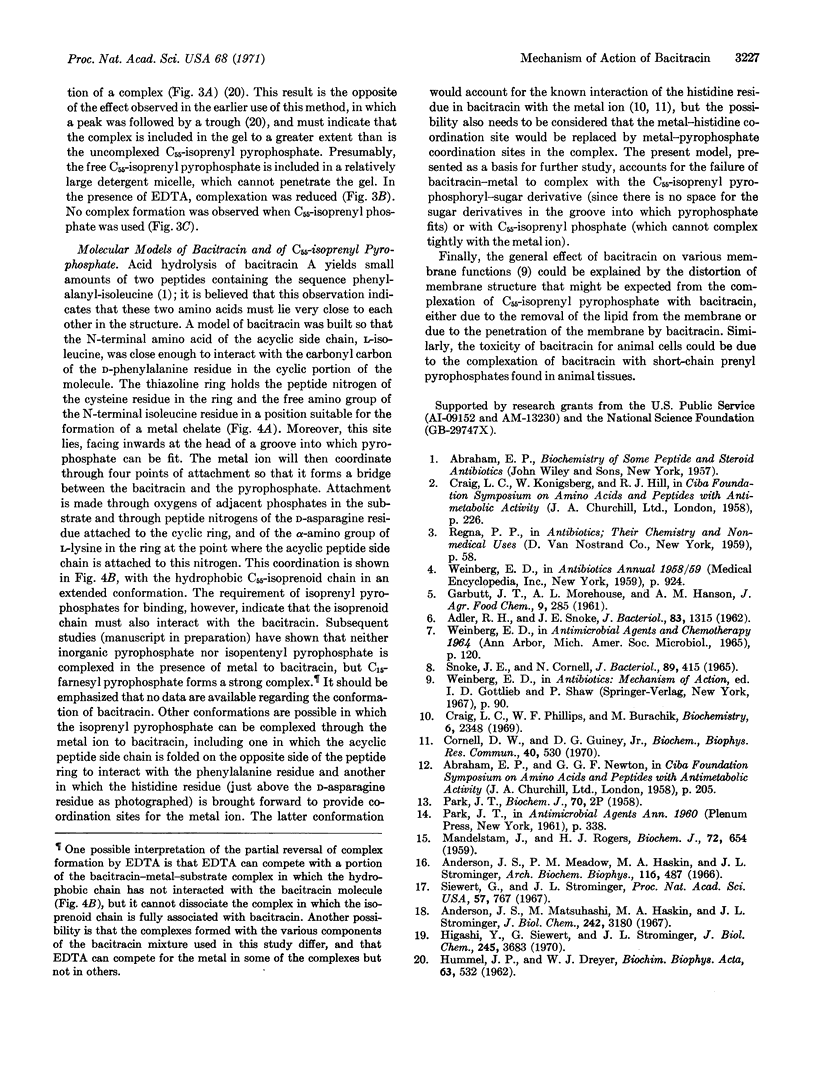
Images in this article
Selected References
These references are in PubMed. This may not be the complete list of references from this article.
- ADLER R. H., SNOKE J. E. Requirement of divalent metal ions for bacitracin activity. J Bacteriol. 1962 Jun;83:1315–1317. doi: 10.1128/jb.83.6.1315-1317.1962. [DOI] [PMC free article] [PubMed] [Google Scholar]
- Anderson J. S., Matsuhashi M., Haskin M. A., Strominger J. L. Biosythesis of the peptidoglycan of bacterial cell walls. II. Phospholipid carriers in the reaction sequence. J Biol Chem. 1967 Jul 10;242(13):3180–3190. [PubMed] [Google Scholar]
- Anderson J. S., Meadow P. M., Haskin M. A., Strominger J. L. Biosynthesis of the peptidoglycan of bacterial cell walls. I. Utilization of uridine diphosphate acetylmuramyl pentapeptide and uridine diphosphate acetylglucosamine for peptidoglycan synthesis by particulate enzymes from Staphylococcus aureus and Micrococcus lysodeikticus. Arch Biochem Biophys. 1966 Sep 26;116(1):487–515. doi: 10.1016/0003-9861(66)90056-7. [DOI] [PubMed] [Google Scholar]
- Cornell N. W., Guiney D. G., Jr Binding sites for zinc (II) in bacitracin. Biochem Biophys Res Commun. 1970 Aug 11;40(3):530–536. doi: 10.1016/0006-291x(70)90934-4. [DOI] [PubMed] [Google Scholar]
- Craig L. C., Phillips W. F., Burachik M. Bacitracin A. Isolation by counter double-current distribution and characterization. Biochemistry. 1969 Jun;8(6):2348–2356. doi: 10.1021/bi00834a015. [DOI] [PubMed] [Google Scholar]
- HUMMEL J. P., DREYER W. J. Measurement of protein-binding phenomena by gel filtration. Biochim Biophys Acta. 1962 Oct 8;63:530–532. doi: 10.1016/0006-3002(62)90124-5. [DOI] [PubMed] [Google Scholar]
- Higashi Y., Siewert G., Strominger J. L. Biosynthesis of the peptidoglycan of bacterial cell walls. XIX. Isoprenoid alcohol phosphokinase. J Biol Chem. 1970 Jul 25;245(14):3683–3690. [PubMed] [Google Scholar]
- MANDELSTAM J., ROGERS H. J. The incorporation of amino acids into the cell-wall mucopeptide of staphylococci and the effect of antibiotics on the process. Biochem J. 1959 Aug;72:654–662. doi: 10.1042/bj0720654. [DOI] [PMC free article] [PubMed] [Google Scholar]
- SNOKE J. E., CORNELL N. PROTOPLAST LYSIS AND INHIBITION OF GROWTH OF BACILLUS LICHENIFORMIS BY BACITRACIN. J Bacteriol. 1965 Feb;89:415–420. doi: 10.1128/jb.89.2.415-420.1965. [DOI] [PMC free article] [PubMed] [Google Scholar]
- Siewert G., Strominger J. L. Bacitracin: an inhibitor of the dephosphorylation of lipid pyrophosphate, an intermediate in the biosynthesis of the peptidoglycan of bacterial cell walls. Proc Natl Acad Sci U S A. 1967 Mar;57(3):767–773. doi: 10.1073/pnas.57.3.767. [DOI] [PMC free article] [PubMed] [Google Scholar]





